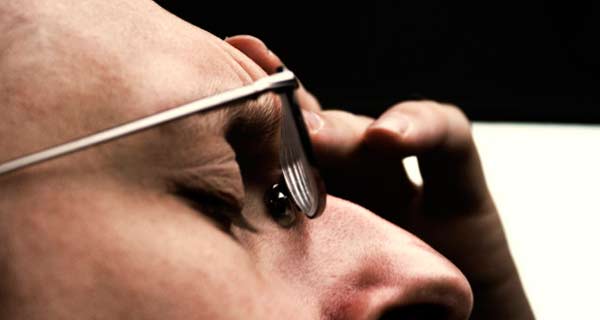The Connection Between Your Eyes and Severe Headaches

You may already know that your eyes have some unique properties that can help your eye doctor screen you for health concerns as wide-ranging as liver disease, elevated bad cholesterol, and even diabetes. What you may not know is that your body can also alert you to health issues with your eyes by giving you a headache or a migraine.
If you’ve suffered through even just one severe headache that’s considered to be a migraine, then you already know just how strong the pain can be. In all likelihood, you may have found little satisfaction in discerning where the headaches come from. But there could be a connection between your eye health, and the onset of migraines. Here’s how you can determine what your body may be trying to tell you through the blinding fog of a full-blown migraine.
Optical Migraines and Eye Health
You may not have realized that not all migraines have pain associated with them by necessity. There is another type of migraine than the pounding variety that’s variously referred to as an optical migraine, an ophthalmic migraine, a migraine aura, or an ocular migraine.
This type of migraine can cause disturbances in a person’s vision, sometimes with accompanying pain, and sometimes without. But this distortion in vision, often appearing as dots or a line in the center of the sufferer’s line of vision, has more to do with changes in the blood flow getting to parts of the brain than it does with the eyes themselves.
Just as with other kinds of migraines, sufferers often report that they have specific triggers for this kind of severe situation. Triggers can include red wine, chocolate, caffeine, and even stress. A very painful headache can accompany the visual distortion, it may follow it, or it may not happen at all, depending on the physiology of the sufferer.
It is very important that you do not try to do anything dangerous, like operate heavy machinery, drive, or engage in anything that requires visual acuity or concentration until the symptoms have receded. Also, make sure that you visit a doctor after you first experience a visual migraine to rule out any potentially serious physical or neurological causes.
Eye Strain and Migraines
Regular migraines – headaches that are so painful that they cause nausea in their sufferers – can be caused by a variety of things. True migraines, somewhat like epilepsy, are often caused by signal disruption between the two hemispheres in the brain, and may or may not have a visual component. However, eyestrain, especially digital eyestrain (the kind you get from working on a computer all day), can cause headaches that mimic many of the symptoms of classic migraines as well.
It is important that you get your eyes checked regularly to ensure that if you need corrective lenses or surgery to help you cope with a long day of computer-oriented work, that you have them. Getting an eye exam can also help to rule out any of the more serious causes of migraines that, if left untreated, could cause greater health problems down the line.
Protect Your Vision, Protect Your Health
Whether you spend all day working on a computer or not, it pays to get your vision checked regularly, and corrected if and when it’s necessary. Adequate vision correction supports the health of your eyes, as well as the health of your brain.
[Photo via: Flickr]

